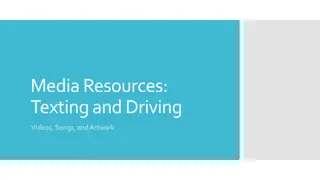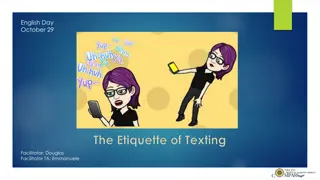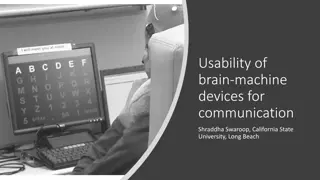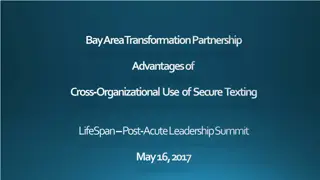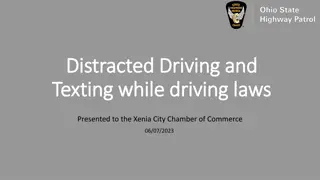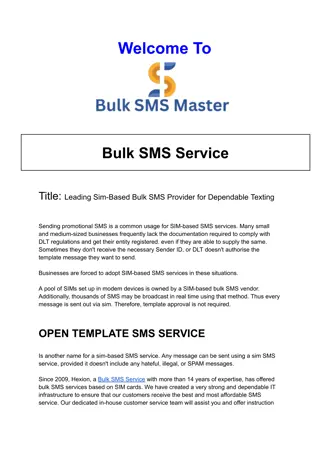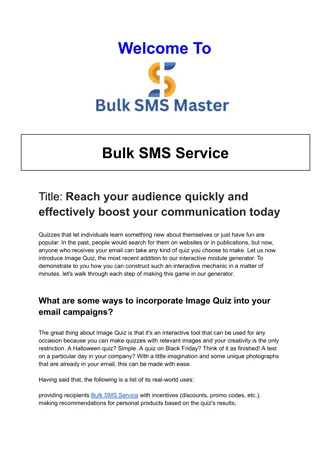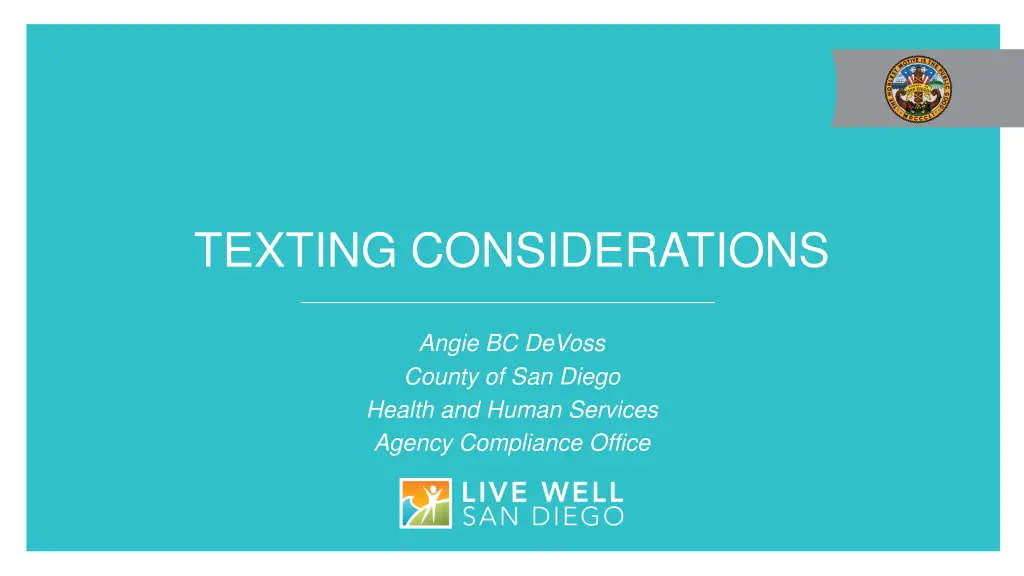
Texting Considerations for Compliance in Health Services
Explore important considerations for texting in health services, including privacy and compliance, defining use cases, secure staff communication, automated appointment reminders, and guidelines for texting clients with their permission.
Download Presentation

Please find below an Image/Link to download the presentation.
The content on the website is provided AS IS for your information and personal use only. It may not be sold, licensed, or shared on other websites without obtaining consent from the author. If you encounter any issues during the download, it is possible that the publisher has removed the file from their server.
You are allowed to download the files provided on this website for personal or commercial use, subject to the condition that they are used lawfully. All files are the property of their respective owners.
The content on the website is provided AS IS for your information and personal use only. It may not be sold, licensed, or shared on other websites without obtaining consent from the author.
E N D
Presentation Transcript
TEXTING CONSIDERATIONS Angie BC DeVoss County of San Diego Health and Human Services Agency Compliance Office
TEXTING DISCLAIMER This training is provided as an aide to help you manage your agency s privacy and security requirements. It remains the responsibility of your agency to ensure your program is aware of and compliant with all of the applicable laws, rules, regulations, and contractual requirements of your agency. This training should not be construed as legal advice.
TEXTING DEFINING THE USE CASE Texting between staff about clients Automated appointment reminders Warm texts to existing clients who have requested texts Replying to a text from a client who hasn t signed the form Cold texts to potential or current clients initiated by staff
TEXTING TEXTING BEWTEEN STAFF Secure texting application De-identified data No PHI may be SMS texted between staff
TEXTING AUTOMATED APPOINTMENT REMINDERS VIA TEXT Notice of Privacy Practices Opt-in on intake paperwork Updated phone numbers Content of message: Avoid clinic or practice names that infer treatment type Be as generic as possible
TEXTING TEXTING CLIENTS WITH THEIR PERMISSION: GUIDANCE FROM OCR-HIPAA: SMS texting is bad because not encrypted Communicate with clients in the manner they request Unencrypted email guidance: The Privacy Rule does not prohibit the use of unencrypted e-mail for treatment-related communications between health care providers and patients OCR-HIPAA FAQ 12/15/2008 We clarify that covered entities are permitted to send individuals unencrypted emails if they have advised the individual of the risk, and the individual still prefers the unencrypted email . If individuals are notified of the risks and still prefer unencrypted email, the individual has the right to receive protected health information in that way, and covered entities are not responsible for unauthorized access of protected health information while in transmission to the individual based on the individual s request. Further, covered entities are not responsible for safeguarding information once delivered to the individual. 78 Fed Reg 5634 SMS texting is same as unencrypted email Roger Severino, Director of OCR HIMSS 2018
TEXTING TEXTING CLIENTS WITH THEIR PERMISSION: CONSIDERATIONS Client population and propensity to text Unsecured versus secure texting BYOD policies Texting limits Urgent and complicated issues Appointments via text Staff education re: how text differs from other communications Billing and claims
TEXTING TEXTING CLIENTS WITH THEIR PERMISSION: RISKS Decision to send unsecured PHI Verifying identity of client Accidental texting of PHI Disregard of text limits/boundaries Clinical issues, staff burnout
TEXTING TEXTING CLIENTS WITH THEIR PERMISSION: POLICIES Addressing texting at intake Expectation setting Time of day and time to respond Open case/closed case Conversation limits Client texting request form Documentation of text messages
REPLYING TO A TEXT FROM A CLIENT WHO HASNT SIGNED THE FORM Patients may initiate communications with a provider using e-mail. If this situation occurs, the health care provider can assume (unless the patient has explicitly stated otherwise) that e-mail communications are acceptable to the individual. If the provider feels the patient may not be aware of the possible risks of using unencrypted e-mail, or has concerns about potential liability, the provider can alert the patient of those risks, and let the patient decide whether to continue e-mail communications. OCR-HIPAA FAQ 12/15/2008 Obtain client acknowledge via text that they understand risk of SMS texting in lieu of form? Boundaries discussion? Call back? Often depends on content of text and relationship with client
TEXTING COLD TEXTING Avoid inclusion of PHI Must consider content of message combined with identifiers such as phone number Staff signatures Specific scripts Splitting of messages over time Risks to public health and health of client versus risk of PHI
AGENCY COMPLIANCE OFFICE WWW.COSDCOMPLIANCE.ORG Christy Carlson Angie DeVoss Group Program Manager Privacy & Deputy Compliance Officer 619-338-2807 619-338-2808 Christy.Carlson@sdcounty.ca.gov Angie.DeVoss@sdcounty.ca.gov Pilar Miranda Frank Larios Security Manager Privacy Officer 619-338-2634 619-338-2231 Pilar.Miranda@sdcounty.ca.gov Frank.Larios@sdcounty.ca.gov






